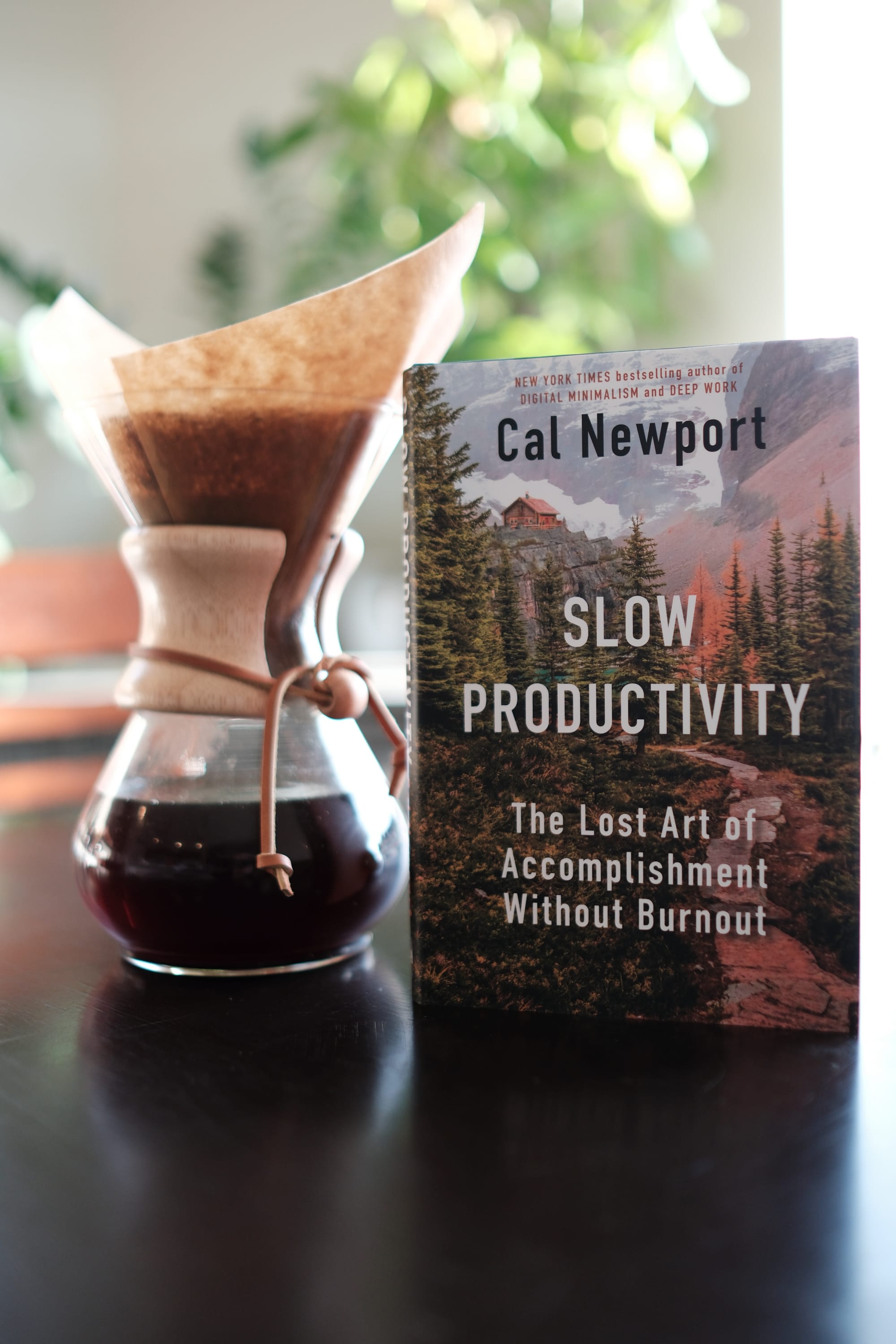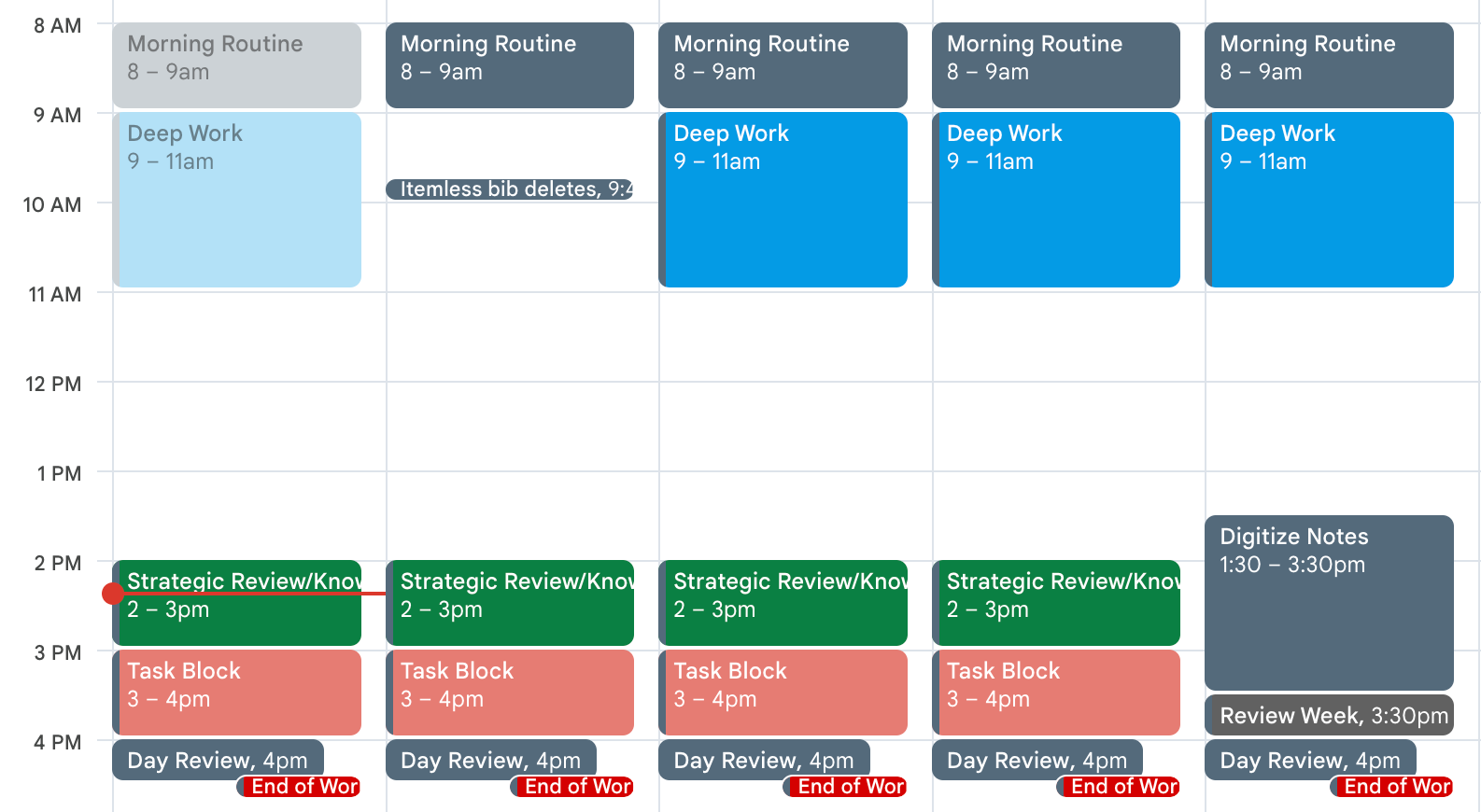Introduction
Do you have an author whose work you tend to consume cover to cover? For me, that author is Cal Newport. Ever since I read "Deep Work," I've been captivated by his writing and podcasts. I even added his articles in The New Yorker to my RSS reader.
But why? When I read Cal Newport's work, I appreciate his ability to present well-researched content without veering into the dry or boring territories. His writing keeps me engaged—I can read it without going cross-eyed or losing interest. I also find that his ideas are immediately applicable to my own life and the person I aspire to be. For instance, I approached his book "Digital Minimalism" because I was tired of wasting so much time on my phone. I wanted to disconnect from the digital noise and reconnect with myself. In particular, I was drawn to his thoughts on finding something meaningful to replace digital consumption, helping to mitigate boredom and anxiety.
So, what is Slow Productivity all about? It critiques the broken way we approach productivity and offers possible solutions to increase our happiness and fulfillment at work. The concept is best explained through the three principles of Slow Productivity that Newport presents:
- Do Fewer Things
- Work at a Natural Pace
- Obsess over Quality

Key Takeaways
The Problem with "Fast Productivity"
Newport identifies our current approach to productivity as Pseudo-Productivity. This phenomenon arises from trying to apply industrial production concepts to knowledge work. In industrial settings like assembly lines, work output is easily measurable by counting produced parts. However, as knowledge work becomes a larger contributor to the workforce, our approach hasn’t evolved. Lacking effective metrics to measure knowledge work productivity, we resort to visual activity as a proxy for genuine productivity. In our desire to appear busy, we gravitate toward low-effort tasks that we can complete rapidly, sacrificing the deeper, more meaningful work that doesn’t yield immediate output.
The Three Principles of Slow Productivity
- Do Fewer Things, but Better:
The first principle encourages us to do fewer things. The problem with Pseudo-Productivity is that we often take on more obligations than we can feasibly manage. A common pitfall is our inability to accurately estimate the overhead that accompanies any given project. Each project involves a slew of meetings, calls, and paperwork—all of which do not directly move the project forward yet are essential for its progress. By taking on more obligations, we inadvertently invite this invisible work into our lives, pushing us dangerously close to burnout. Newport suggests limiting active obligations to two or three at a time.
Personally, I’ve fallen into the trap of taking on too many commitments (I’m guilty of wanting to please others). I've experienced the overhead work that comes with such obligations, which makes me feel like nothing is moving forward even as I scramble to get tasks done.
- Work at a Natural Pace:
We live in a time where many of us have accumulated unused vacation hours. We're working more while increasingly rushing through low-effort, low-impact tasks. This behavior sets us out of sync with our natural rhythms. Newport proposes that we allow our important work to unfold at a more natural pace—similar to the work patterns of our Hunter/Gatherer ancestors. By giving our work the necessary time, we can grasp nuances and access a wider range of information. Historical figures like Benjamin Franklin, Thomas Edison, and Jane Austen exemplified this beneficial pace. - Obsess over Quality:
The third principle supports the previous two. When we prioritize quality, it naturally leads us to take on fewer projects, thereby enabling us to produce the work that we're truly aiming for. Producing quality content requires us to work at a more deliberate pace. This principle also aligns with the concept of getting 1% better every day, borrowed from James Clear's "Atomic Habits." As we hone in on quality, we fine-tune our skills, ultimately achieving a level of expertise that enhances our marketability. Much like Newport states:
"Give yourself enough time to make something great, but not unlimited time."
This sentiment combats a common hurdle in the pursuit of quality: perfectionism. As someone who grapples with perfectionist tendencies, I remind myself that while quality is vital, I also need to set deadlines to avoid scope creep.
What I’m Trying to Apply
Now, let's explore how I'm attempting to implement the lessons from this book. I’m at the beginning of this journey, so I recognize that I will likely iterate on these strategies as I move forward.
Limit the Scope of My Commitments:
Initially, my calendar resembled a free-for-all; now, I’m more mindful about setting non-negotiable work time. Meetings no longer clutter my schedule. A key takeaway from the book is to be flexible with colleagues and customers as I establish this system. Abruptly cutting off my availability could lead to frustration, so I’m gradually moving toward my ideal schedule.

Embrace a Slower Pace:
The calendar adjustments play into my commitment to a slower pace. Some days, I find I have empty slots reserved for deep work. Instead of feeling pressured to fill that time with tasks, I’m now allowing myself to brainstorm and think creatively about my ongoing projects.
Focus on Quality:
As I give myself more time for brainstorming, I’m already seeing the development of ideas that wouldn’t have surfaced otherwise. I’m also now consuming more media related to my projects, which I believe will enhance the overall quality of my work.
Challenges with Slow Productivity
I’m still in the early stages of applying Slow Productivity principles. One significant challenge is overcoming years of a Pseudo-Productivity mindset. When I glance at my daily plan, it’s easy to perceive free time as an opportunity to cram in more tasks. Additionally, I face difficulty because some colleagues remain entrenched in the belief that productivity equates to cramming as much as possible into a single day. Overcoming these challenges will require time, mindfulness, and patience.
Call to Action
Are you stuck in the Pseudo-Productivity loop? Do you toe the line between burnout and mere task completion? If so, maybe it’s time to explore Slow Productivity. I believe that the insights I’ve outlined can serve as a starting point for anyone interested in implementing a Slow Productivity framework. I’ve shared my personal highlights from the book, yet everyone will resonate with different aspects. If you find yourself intrigued by what I’ve discussed, I highly recommend reading the full book.
Conclusion
In our fast-paced world, embracing Slow Productivity could be the key to rediscovering balance and fulfillment in our work lives. By adopting the principles of doing fewer things, working at a natural pace, and obsessing over quality, we can not only alleviate the stress that comes with Pseudo-Productivity but also cultivate a deeper sense of satisfaction in our endeavors. Remember, it's about progress, not perfection. As we work on integrating these lessons, let’s support one another on this journey to meaningful productivity. What steps are you ready to take toward a more intentional approach to your work? Share your thoughts in the comments!
